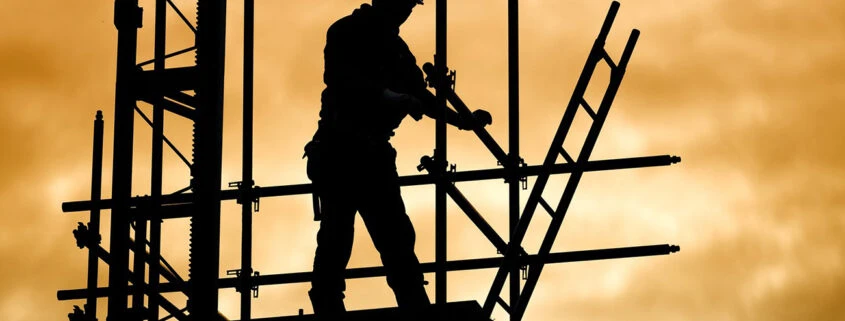Scaffold Safety
Over our 20 years in business, HB NEXT has seen almost everything! We have seen that most construction workers are familiar with scaffolds, but a majority of workers are unfamiliar with the safety inspection that needs to be performed before working on scaffolds. Below, you will find a comprehensive list of inspection practices and ‘must knows’ for using scaffolds.
Supported Scaffolds:
- Inspection by competent person is required before each shift or any occurrence which could affect scaffold structural integrity.
- Any part of damaged or weakened scaffold shall be repaired, replaced, or removed from service until repaired.
- Legs, posts, frames, uprights shall rest on baseplates and mudsills (or other adequate firm foundation). Footings shall be level, sound, rigid and capable of supporting the loaded scaffold without settling or displacement.
- Scaffolds and components shall not be loaded in excess of maximum intended loads or rated capacities, whichever is less.
- If scaffold platforms are more than 2ft above or below a point of access, ladders, walkways, integral prefabricated access frames, personnel hoist, etc. shall be used.Crossbraces shall not be used as access.
- Fall protection will be provided for employees at 10 ft or more.
- Falling object protection for employees will be provided by the use of hardhats, as well as toeboards, screens, barricades, or canopies. You must wear hardhats 100% of the time.
- Guys, ties, and braces shall be installed per manufacturer recommendation when scaffold reaches a 4:1 height to base width ratio, and must be installed at least at each end with a maximum interval of 30’.
- Distance from power lines per OSHA standards (based on insulated/non-insulated lines and voltage) must be adhered to (minimum 10’ clearance).
- Working on scaffolds in storms or high winds is prohibited unless determined safe by a competent person. Working on scaffolds covered in snow, ice, or other slippery material is prohibited except to remove.
- Supported scaffold poles, legs, posts, frames, and uprights shall be plumb and braced to prevent swaying and displacement. Where uplift can occur, the frames shall be locked together vertically by pins or equivalent means.
- Unstable objects shall not be used to support scaffolds or platform units.
Suspension Scaffolds:
- Must be inspected by competent person prior to shift. Defective components shall be replaced.
- Capacity must be its own weight plus 4 times maximum intended load.
- Suspension rope must support 6 times maximum intended load when scaffold operated at rated load of hoist or 2 times rated load.
- Fall protection will consist of PFAS and guardrails.
- PFAS secured to separate anchorage than platform to create an independent life line.
- Direct connections must support 4 times tipping point of scaffold at rated load or 1.5 times tipping moment at stall load of hoist whichever is greater.
- Counterweights cannot be of flowable material and must be secured in place during use.
- Tiebacks shall be equivalent in strength to the suspension ropes.
- Tiebacks shall be secured to a structurally sound anchorage on the building or structure.
Aerial lifts:
- Must meet ANSI requirements
- Lift controls tested prior to use each day.
- Only authorized personnel may operate.
- Employees must stand firmly on floor of basket.
- Harness and lanyard shall be attached to basket when working from aerial lift.
At HB NEXT, safety is our priority, and scaffolds are no exception. Keep your personnel safe on the jobsite by creating a Safety Program or customized training program for your company. If you have any further questions, please feel free to contact HB NEXT.





Leave a Reply
Want to join the discussion?Feel free to contribute!